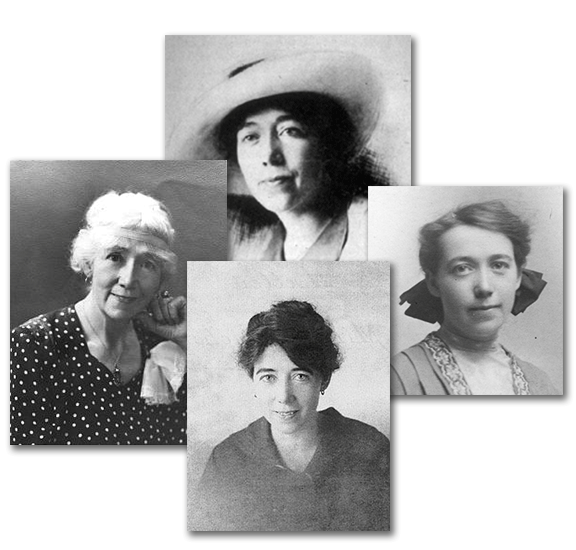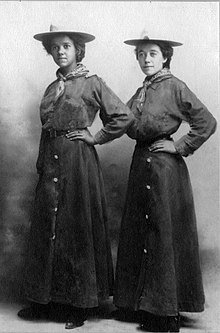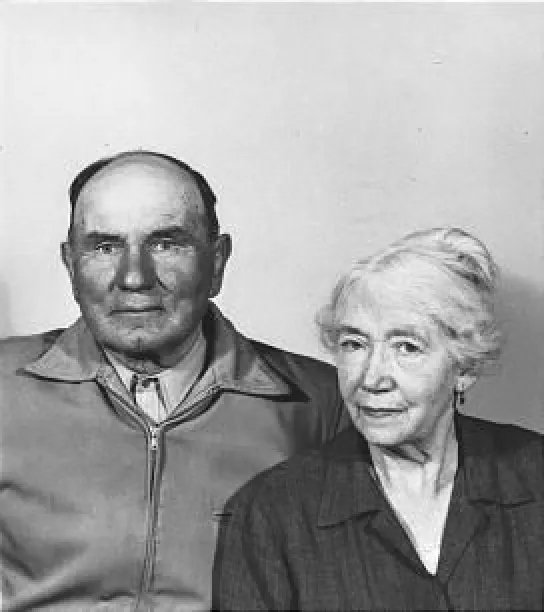Minerva Teichert Legacy of Art & Inspiration Strong as Ever
Minerva Teichert was indeed a celebrated artist, and her impact on the art world and the Latter-day Saint community remains significant even five decades after her death. Her unique style and subject matter made her artwork highly recognizable and sought after. Here's some additional information about her and her enduring legacy:
Early Life and Career: Minerva Kohlhepp Teichert was born on August 28, 1888, in North Ogden, Utah. She displayed artistic talent from a young age and pursued her passion for art despite facing societal challenges. She studied at the Chicago Art Institute and later at the Art Students League in New York City. Her early work primarily focused on Western and cowboy themes.
Latter-day Saint Themes: Teichert's strong faith in The Church of Jesus Christ of Latter-day Saints, commonly referred to as the LDS Church influenced much of her artwork. She created numerous paintings depicting scenes from the Book of Mormon, the Bible, and other religious narratives. Minerva Teichert LDS art and paintings often emphasized faith, courage, and the human spirit.
Public and Private Collections: Teichert's artwork can be found in both public and private collections. Many of her paintings adorn the walls of LDS temples and chapels, contributing to the spiritual ambiance of these sacred spaces. Her works are also housed in various museums, including the Springville Museum of Art in Utah.
Magazines and Lesson Manuals: Teichert's artwork has been featured on the covers of LDS Church magazines, lesson manuals, and other publications. Her illustrations have helped convey important religious teachings and stories to a broad audience.
Recognition: Over the years, Minerva Teichert received numerous accolades and awards for her contributions to art and her dedication to her faith. Her artistic talent and commitment to her beliefs continue to inspire many within and outside the LDS community.
Enduring Legacy: Minerva Teichert's legacy endures through her art, which continues to be celebrated and admired by people from all walks of life. Her ability to capture the essence of faith and spirituality in her work has left a lasting impact on the religious and artistic communities.
In summary, Minerva Teichert's artwork remains as recognizable and influential as ever, thanks to her distinctive style and her dedication to portraying Latter-day Saint themes. Her paintings continue to inspire and resonate with audiences, and her legacy as a renowned artist and devout Latter-day Saint lives on.
More about Minerva Teichert
Minerva Teichert, born on August 28, 1888, and passing away on May 3, 1976, was a distinguished American painter of the 20th century, renowned for her artistic representations of Western and Mormon art themes. Teichert’s notable body of work includes an impressive collection of murals that vividly portray scenes from the Book of Mormon. Teichert's artistic journey was enriched by her education at both the Art Institute of Chicago and the Art Students League of New York. Furthermore, she was a devoted member of the Church of Jesus Christ of Latter-day Saints commonly referred to as LDS Church.
Among Minerva Teichert’s most recognized religious-themed creations are LDS art masterpieces such as "Christ in a Red Robe," "Queen Esther," and "Rescue of the Lost Lamb." Notably, Teichert contributed a total of 42 murals inspired by Book of Mormon art narratives, and these captivating artworks now find their home at Brigham Young University's - BYU Museum of Art.
An exceptional milestone in her career was her distinction as the first woman ever invited to paint a mural for an LDS Church temple. Through her artistry, Minerva Teichert left an enduring mark on American art, particularly through her captivating portrayal of Western and religious subjects.
Teichert's early life and family history add depth to her remarkable journey. She was the second child among ten born to Frederick John Kohlhepp, a railroad worker and rancher, and Mary Ella Hickman, a suffragette and pamphleteer. Growing up on a ranch in Idaho, Minerva's upbringing was infused with the essence of sketching horses and the ranch life from a tender age. Her artistic talent was nurtured by her mother, who gifted her first set of watercolors when she was just four years old. Teichert’s childhood was filled with creativity, as she acted out plays and assisted her father on the farm. Minerva had a deep love for horseback riding, exploration, and sketching scenes from the natural world, passions that both her parents supported wholeheartedly.
The name "Minerva" had historical significance, as it was derived from her maternal grandmother, Minerva Wade Hickman, who was one of the wives of the renowned frontier lawman and express rider, "Wild Bill" Hickman. Minerva was also a descendant of Colonial Governor Thomas Roberts of New Hampshire.
Minerva's mother was an educated woman who attended the Sacred Heart Academy in Ogden, Utah, where she received instruction in language, arts, and music. She came from a rich lineage comprising English, Scottish, Irish, Welsh, French, Belgian, Spanish, and German ancestry. On the other hand, Minerva's father had originally come from a prosperous German-immigrant Jewish family in Boston, Massachusetts. He ventured westward as a young man in 1878, where his experiences included bison hunting and work on various ranches, including those near Buffalo, Wyoming, and the Powder River area. His journey eventually led him to Utah, and he embraced the LDS Church in 1886. Frederick and Mary married in 1887 and later settled in Pocatello, Idaho. Due to Frederick's eye injury sustained while working in the railroad yards, the family frequently relocated to various rural communities, where they opened and ran small shops. The lack of formal schools in these areas meant that Minerva and her siblings were frequently homeschooled, leaving Minerva without a formal primary education.
Minerva embarked on a new phase of her life at the age of 14 when she left Idaho to work as a nursemaid in San Francisco. During her time in San Francisco, she encountered an art museum for the first time and also enrolled in classes at the Mark Hopkins Art School. After returning home and graduating from Pocatello High School, Minerva taught in Idaho, saving her earnings to pursue further education and artistic aspirations.
Minerva's artistic education included studying at the Art Institute of Chicago under John Vanderpoel. During her time in Chicago, she earned the nickname "Miss Idaho." She completed her courses in 1912 and returned to Indian Warm Springs, Idaho, to continue her artistic journey. During this period, she was courted by two young men and met her future husband, Herman Teichert. However, Minerva chose to prioritize her artistic pursuits over marriage at that time. She later studied at the Art Students League of New York in 1914, where she learned from notable instructors such as Robert Henri, George Bridgman, and Dimitri Romanoffski. Henri, in particular, recognized her exceptional talent, providing her with a scholarship and ranking her among his top three students. To support her studies, Minerva sketched cadavers for medical schools, illustrated children's books, and performed rope tricks and Indian dances. Her distinctive headband, a signature of her style throughout her life, may have originated from these performances. Although Minerva received a scholarship to study in London, she chose to return home and eventually married Herman.
In 1917, she returned to Idaho and married Herman Adolph Teichert on September 15 of that year. Following their marriage, Herman left to serve in World War I, and the couple eventually had five children. Minerva spent most of her life on a ranch in Cokeville, Wyoming, where she painted subjects she knew and loved best: scenes from Western Americana and religious artwork reflecting her deeply held convictions. In the early years of her marriage, she sketched on whatever materials were available, including scraps of wood and paper, due to limited funds for art supplies.
Minerva Teichert's was dedicated to her craft throughout her life. Teichert painted in her living room and, when working on murals, would fold her canvas and use binoculars to view her work from different perspectives. When asked about her persistence in painting despite artistic isolation and a lack of dedicated studio space, she simply replied, "I must paint." Minerva was a strong and independent woman who advocated for women's rights and held outspoken political conservative views. She generously shared her talents by giving art lessons in her home. In addition to her art career, she raised five children and managed her homestead and ranch.
In 1947, Minerva Teichert achieved a significant milestone when she won first prize in the LDS Art Contest held by her Church called the Centennial Art Contest and became the first woman to paint a mural for an LDS Temple, which was the Manti Temple. In the mid-1940s, having achieved success with mural painting, she embarked on a series of murals inspired by stories from the Book of Mormon. Originally considering theatrical productions based on Book of Mormon themes, she ultimately chose to create paintings. To bring her vision to life, Teichert utilized live models, costumes based on sketches she had made while traveling in Mexico, and painted backdrops. Her inspiration drew from scholarly writings, including the works of LDS author Hugh Nibley. In total, she created over forty Book of Mormon art murals. In the mid-1950s, she converted these murals into slides for presentations, although her desire to publish them in book form remained unfulfilled during her lifetime.
Minerva Teichert's art frequently featured women and Western themes, exemplified by works like "The Madonna of 1847," which depicts a Mormon pioneer mother and child in a covered wagon, crossing the plains in their journey to settle in Utah. Although she created over 400 murals during her career, she is particularly renowned for her set of 42 murals depicting scenes from the Book of Mormon, as well as her murals within the Manti Utah Temple. She also contributed murals to the LDS Church's tabernacle in Montpelier, Idaho, although they were temporarily removed during renovations to accommodate a heating system. These murals were later returned to their rightful place in the tabernacle.
Minerva Teichert's distinctive artistic style included the use of patterns in clothing, the strategic use of the color red for contrast, and often leaving the edges of her works unfinished or sketched. Many Minerva Teichert paintings drew inspiration from the colors of the desert and featured distant mountains. Despite submitting numerous pieces of artwork to the LDS Church during her lifetime, many were initially rejected. She also gave several paintings to Brigham Young University - BYU to cover tuition expenses for her family members. Her works are prominently displayed throughout the BYU campus, including the Joseph Smith Building, the Wilkinson Student Center, and the BYU Museum of Art. The "Pageants in Paint" exhibition, one of her most famous, has been showcased in the BYU Museum of Art. Additionally, several of her works are displayed on the campus of Brigham Young University–Idaho. Her Book of Mormon art murals are a valuable part of the collection at the BYU Museum of Art.
Minerva Teichert's deep faith in the LDS Church had a profound impact on the subjects of her LDS art. She was the first woman sent on an art mission by the church, initially to Chicago and later to New York City, before attending the Art Students League. She served in various church callings, including as Primary president and on the Stake Sunday School Board, as well as working in the Young Women organization.
Her husband, Herman, was not a member of the LDS Church when they were married, but supported her church involvement and donated tithing. He later converted to the faith in 1933, and the couple was sealed in the Logan Utah Temple the following year. Minerva and Herman had five children.
Minerva Teichert continued to paint well into her seventies. However, a hip fracture resulting from a fall in 1970 forced her to stop painting. She entered a nursing home in 1973 and passed away in Provo, Utah, on May 3, 1976. She was laid to rest in the cemetery in Cokeville, Wyoming.
Throughout her extensive career, Minerva Teichert is believed to have created thousands of paintings. Several of her works are held in various museums, including the Utah Museum of Fine Arts in Salt Lake City, The Church of Jesus Christ of Latter-day Saints History Museum, Brigham Young University Museum of Art, The Springville Art Museum in Springville, Utah, which owns two of her works, and the Brigham City Museum, which houses her painting "Pioneers: Water Scene." Her art was featured in the semi-permanent exhibition "Becoming America" at BYU's Museum of Art from 2019 to 2022.
One of the most poignant moments in Minerva Teichert’s artistic legacy was the recovery of her painting "Restoration of the Melchizedek Priesthood" from the ruins of the Provo Tabernacle, which was destroyed by fire in 2010. The painting, self-insured by the church and valued at $1.5 million, was almost completely destroyed in the fire but was identified and recovered. This event led to a comprehensive effort to catalog and preserve original artworks in the church's buildings throughout the United States and Canada.
In summary, Minerva Teichert's life was a remarkable journey marked by her unwavering dedication to art, faith, and family. Her legacy as a pioneering woman artist, devoted church member, and prolific muralist endures through her captivating and deeply meaningful paintings, which continue to inspire and resonate with audiences today.


